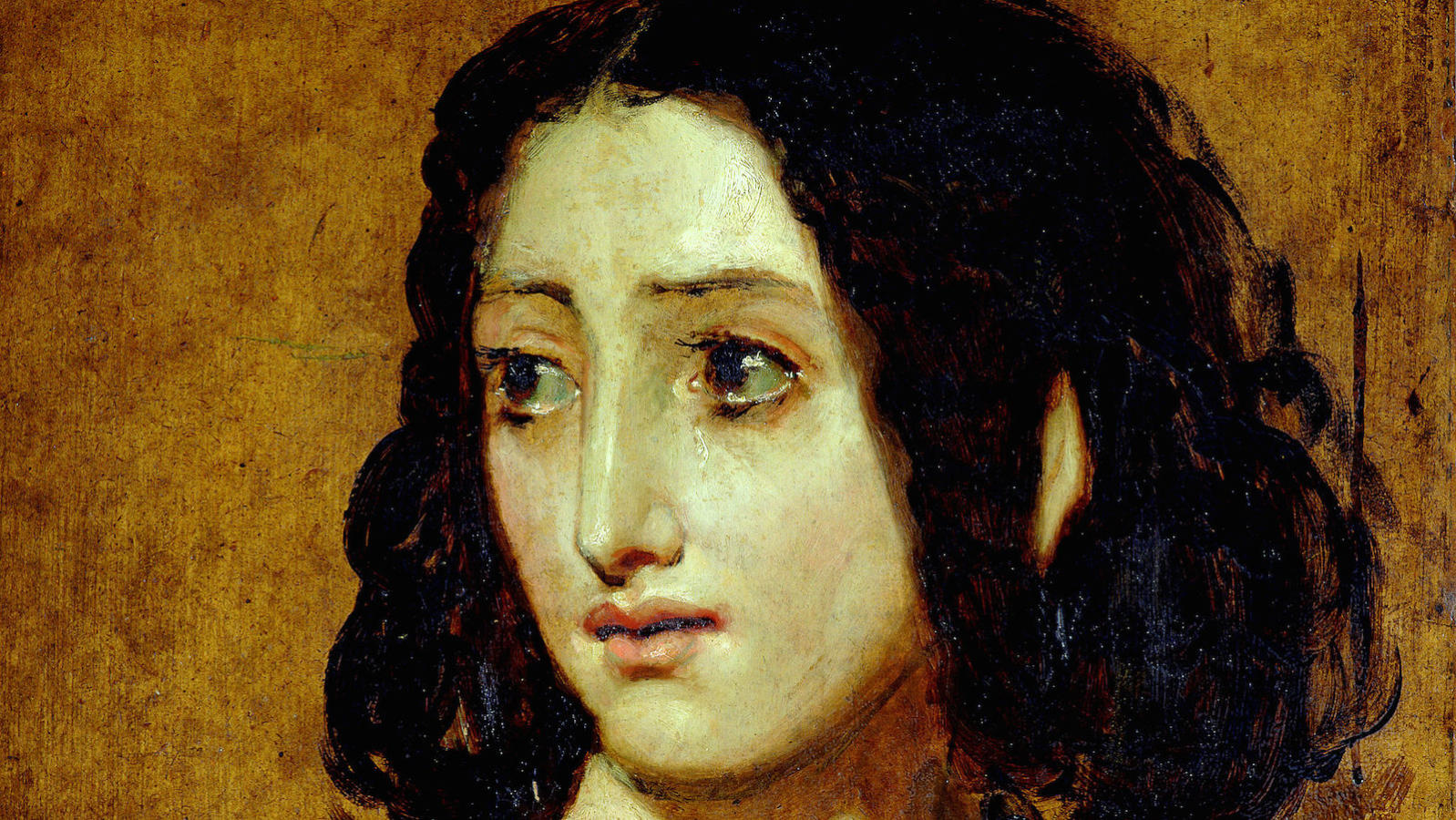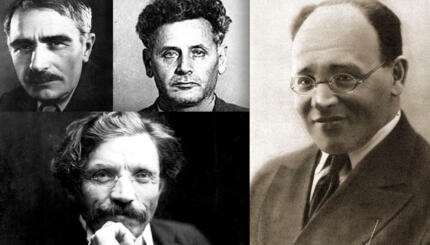The Jew’s participation in 17th- and 18th-century theatrical productions was at best insignificant. As a stage character, however, the Jew, portrayed by non-Jewish actors, became a popular figure in the European theatre. He was generally a villain, although occasionally, in plays by authors opposed to Jew-baiting, a super noble being.
Jewish actors, until 1900, were isolated figures, facing prejudice and often abuse. It was not until the second half of the 19th century that Jews gained prominence as actors and directors in Europe and in the United States and made their mark as they had in other professions.
Negative Portrayals in England
The bleak period is typified by the theatre in England, where the Shakespearean age had made drama the most important art form in the country. Jews, who had been expelled in 1290, were little known in England until their return in the mid-17th century, but they were known on the stage. Early representations of Jews as villains gave way to stage characters who, because they were Jews, were either usurers or fools, and almost always ridiculous.
The first English secular play which included a Jewish character was The Three Ladies of London by R.W. (possibly Robert Wilson), published in 1584, in which a Jew, portrayed as decent and honorable, was nevertheless defrauded. Shortly afterward, Marlowe’s The Jew of Malta (1591) and Shakespeare’s The Merchant of Venice (1596), in both of which a Jew was the villain, set a pattern which was to endure.

Help us keep Jewish knowledge accessible to millions of people around the world.
Your donation to My Jewish Learning fuels endless journeys of Jewish discovery. With your help, My Jewish Learning can continue to provide nonstop opportunities for learning, connection and growth.
There are on record 80 plays published in England from 1584 to 1820, in which at least one character was recognizable as being Jewish; most of them were written after 1700. After 1800 plays with Jewish characters appeared at the rate of almost one year.
One book changed the atmosphere for Jews in the arts and profoundly influenced their portrayal. In Oliver Twist, Charles Dickens drew Fagin as an unrelieved picture of evil, which set the tone in drama for most of the rest of the 19th century. The first adaptation of Oliver Twist reached the stage in 1838, the very year of the novel’s publication. Fagin was followed by an almost unrelieved procession of Jewish stage distortions, and even helped to popularize a lisp for stage Jews that lasted until 1914.
Breaking the Stereotype
Nevertheless, the Jews were beginning to protest. They comprised a considerable portion of theatre audiences at the time, and during one performance in 1839 their resentment overflowed into a disturbance that drowned the play completely. A riot stopped Dibdin’s Family Quarrels at its 1802 opening when the audience took offense at a Jewish reference. Jews often expressed their disapproval of a play by staying away. A revival of The Jew of Malta in 1818 led to a Jewish boycott of London theatres for the rest of the season.
The Jewish stereotype on the London stage was finally broken in 1914 by three plays that treated Jews in some depth: Israel Zangwill’s The Melting Pot, Harold F. Rubinstein’s Consequences, and Herman Scheffauer’s The New Shylock. In 1922 came Galsworthy’s Loyalties, which treated the Jew and the prejudices surrounding him with dignity and objectivity. Leon M. Lion, the actor-producer, played in a revival of the play in 1928.
French Theater
In most 19th-century French plays Jews were either caricatured or romanticized, the men portrayed as ugly, old, and dirty, and the women as noble, beautiful, and heroic, but there were three important exceptions.
Le Juif by Marc-Antoine-Madelaine Desaugiers (1772-1827) produced in 1823 included the benevolent character Isaac Samuel. The playwright Adolphe Philippe d’Ennery (1811-1899), who had been a public notary and was said to be a Jew named Jacob, criticized the convention that a Jew must be grotesque and repulsive. Catulle Mendes (1841-1909), whose father was a Jew, painted a sympathetic Jewish character in Les Meres Ennemies (1880). But there was no Jewish character in French drama as memorable as the English Shylock or the German Nathan the Wise.
Foremost among France’s Jewish actors was Sarah Bernhardt who, though Roman Catholic by upbringing, was proud of her Jewish heritage; and Eliza (Rachel) Felix who died young, having become famous as an interpreter of French classic roles.
Beginning a German Tradition
In no other country in modern times did the theatre play as important a role as in Germany. And in no other country did the Jew figure so prominently in dramatic literature, in acting or directing.
In 1616, Das Endinger Judenspiel, dealing with the trial and burning of Jews for murder after the disappearance of a Christian family, was performed in Endingen (Baden). Following that Andreas Gryphius (1616-1664) presented his Horribilicribrifax (1663; after Plautus’ Miles Gloriosus) featuring the boasting Jew Issachar; and, decade after decade from 1634, the Bavarian Oberammergau Passion Play has been staged, in the face of energetic Jewish protests. The 17th and 18th centuries produced a considerable number of villainous or at least reprehensible Jewish figures in dramatic literature.
Nevertheless, Germany, at a relatively early time, provided exceptions to the general attitude. Die Juden (1749), written by Gotthold Ephraim Lessing, boldly attacked Christian prejudice. Much more important, however, was Lessing’s Nathan der Weise (1779) in which Jewish, Christian, and Muslim characters present the idea that virtue is not bound to religion and that all religions are equally important.
The play was banned from the stage for a number of years. A considerable number of writers for the stage followed Lessing’s example and created sympathetic Jewish figures in their plays.
It was only toward the end of the 18th century, the time of the Emancipation, that Jewish actors appeared on the German stage. Their number, however, increased rapidly, a fact noted by the German actor and historian of the theatre, Eduard Devrient, in his Geschichte der deutschen Schauspielkunst (5 vols., 1848-74).
It seems that Jacob Herzfeld (1769-1826), who was admired by Goethe and Schiller and corresponded with both, was the first serious Jewish actor on the German stage. He was followed by members of three generations of his family.
Leading in to World War II
During the 19th and at the beginning of the 20th centuries many names of Jewish theatre directors in Berlin and elsewhere became widely known. Carl Friedrich Cerf (1771-1845) created the first private theatre in Berlin; Victor Barnowsky, Oscar Blumenthal (1852-1917), and Gustav Lindemann (1872-1960) in Duesseldorf are among them. Alfred Kerr was the most notable representative of a generation of Jewish theatre critics who had enormous influence on the development of the theatre in Germany and made the reviewing of plays a quasi-independent art form. Romanian born Ernst Stern (1876-1954) was, during the last pre-Hitler decades, Berlin’s and Reinhardt’s most honored scenic artist and stage designer.
Jewish audiences played an important, sometimes decisive role, as developments after Hitler’s take-over illustrate. On April 10, 1933, the Berlin correspondent of the Daily Telegraph reported: “The theatres are beginning to suffer from the impoverishment of the Jews, who have always been lavish patrons. A new production at the Deutsches Theatre, enthusiastically praised by the entire press, has been taken off after a few performances before a nearly empty auditorium.”
When Hitler came to power, there were about 2,400 Jewish actors and theatre directors in Germany. On April 1, 1933, an organized anti-Jewish boycott began and Jewish actors were ousted. These actors and the public reacted by forming the Juedischer Kulturbund (“Jewish Cultural League”).
From 1933 on, Jews who fully understood the situation and were able to do so left Germany; but the Jewish Cultural League (from 1933 to 1938–in a limited way until 1941) supported three theatre ensembles, an opera, two symphonic orchestras, one cabaret, a theatre for Jewish schools, some choirs, numerous chamber music groups, and lectures and art exhibits. About 2,500 artists (actors, singers, instrumentalists, poetry readers, directors, dancers, and graphic and plastic artists) and lecturers belonged to this organization set-up, and nearly 70,000 people in about 100 cities formed this public, largest voluntary union of Jews in Germany.
The first performance, on Oct. 1, 1933, was Lessing’s Nathan der Weise. When Allied Powers reopened the Deutsches Theatre in Berlin in 1945, the first performance was again Nathan der Weise. The director was Vienna-born Fritz Wisten, one of the few surviving members of the Juedischer Kulturbund. Very few Jewish actors and directors returned to Germany after the war; the most important of those who did were Fritz Kortner and Ernst Deutsch.
Reprinted with permission from the Encyclopedia Judaica (Thomson Gale).




